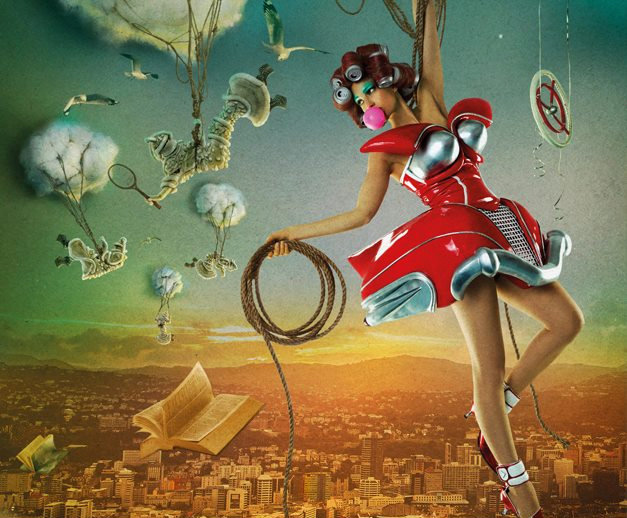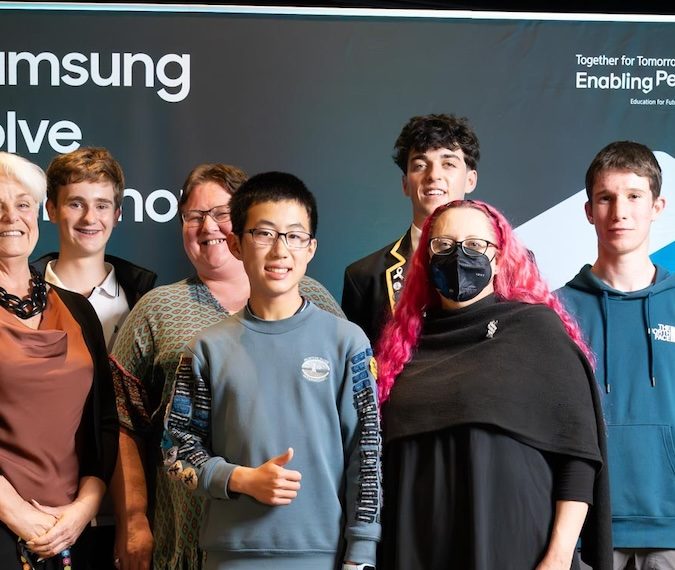

Mark Dobson
First place: 2014 WETA Workshop Costume and Film Section
Sakana No Senshi
Crafted with more than 60kgs of fish skin and scales from snapper and eagle stingray, paua and seashells, Mark Dobson’s winning garment incorporates a passion and love of the sea, Japanese mythology and medieval costume and design.
This was the first year Dobson has entered the awards. His entry called Sakana No Senshi was based entirely on the mythical Japanese dragon god of the sea Ry?jin, as a response to the 2014 World of WearableArt category theme Kingdoms of the East.
He went on to win first place in the WETA Workshop Costume and Film section.
Dobson says he spent roughly seven months on the design, but sketching out the exact details proved a lot harder than he thought. “The ideas kept evolving, and the development kept growing, so I just went with it”.
Dobson’s list of materials include crushed tua tua shells, snapper scales, sharks’ teeth, hundreds of black beads, black sand and the barbs of terakihi dorsal fins.
The only man-made material used for the design was inner-tubing from truck and tractor tyres as backing to the fish skin and dragon scales, and as upholstery fabric that lines the inside of the garment.
Working with natural materials had its difficulties.
“I did quite a few experiments with the design because the scales kept getting distorted. I had to scrape all the flesh off it, rinse it in simple green cleaning solution, then rinse it again and soak it in borax powder for two days. This, while having it spread out on Perspex boards and air dried.
“I then found that the colour of the scales wore off, and became quite translucent; so I started to use tie-dye. Luckily, the scales are natural materials that absorb tie-dye really well”.
“Through my research, I discovered a myth about Ry?jin living in a red and white palace under the ocean, which lead my colour choices, ones that really packed a punch.”
Legend has that Ry?jin lived in a red and white palace under the sea – quite appropriately, the hue of dye Dobson chose for the scales was called ‘Gold Fish’, which he says did a fantastic job of enhancing the textures.
The austere black and white mask is actually a mold of Dobson’s face, using plaster of Paris.
Once stiffened with resin, the mask was decorated with crushed tua tua shells, and black sand across the jaw-line.
To form the sea god’s armor took over 1000 fish, cured by Dobson himself, and countless late nights hand sewing ‘dragon scales’ onto the inner-tube of the rubber tyre using a three-inch long needle and a braided fishing line.
“I stabbed myself many times,” he says. “But all in all, it was an experience I really enjoyed.
“Being in my own garage working on the piece was very therapeutic for me; I didn’t worry about anything else around the world.”

Dylan Mulder
Second place: 2014 WETA Workshop Costume and Film Section
Emperor Hidden Moth, and His Minions
Wellington-based industrial designer Dylan Mulder came first place in last year’s WoW New Zealand category with his entry Samurai Silent Dragon – a predominantly 3D printed piece that took over four months to design.
In this year’s competition, Mulder came back with a hard-hitting 3D-printed and laser cut design.
It also came with a hidden smoke system made from e-cigarettes, a UV light show, and USB-triggered sound system.
He says this year was about exploring armor and robotic designs that looked “particularly different”.
“The key for me was to deliberately design for the future, because Kingdoms of the East as a theme implies that we have to look to our past and derive inspiration from that. Though I didn’t believe that there was any form of time constraint interpreting history and that was a point of difference for me,” says Mulder.
A specialist in 3D printing and design, Mulder says that not many designers are using the technology in garment production.
“I’m definitely interested in the fashion industry and how 3D printing can be applied to that.”
Although he did not win this year’s competition, Mulder has had a range of opportunities, including a line of 3D printed jewellery, while Air New Zealand has taken him on board.
“What came out of all of this? I’ve met some really high profile people, CEOs of businesses who were able to see how my techniques could apply to their various industries.”
In terms of competing in future competitions, he says the process can become quite draining… but as a creative person he can’t help but come up with more ideas and design.
“I’ve been trying not to do it and take a breather, but ideas come out of me anyway – and before I know it I start designing.”






